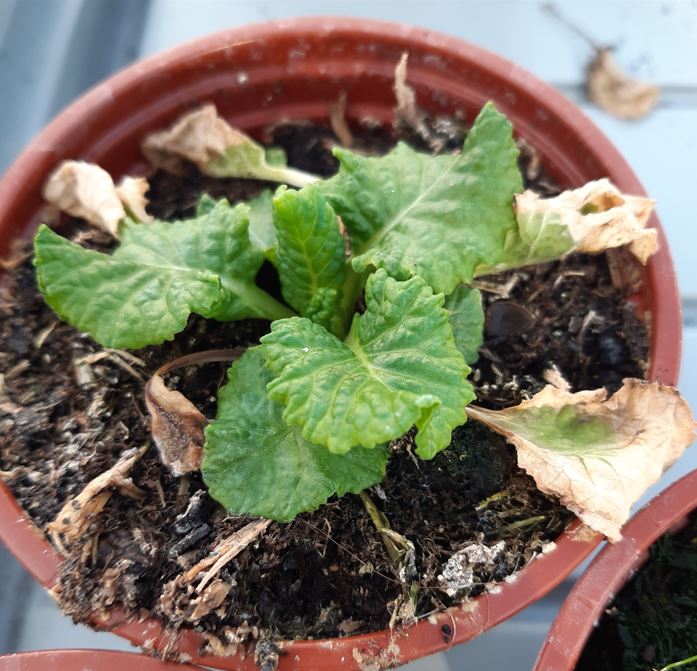Please click here to access the main AHDB website and other sectors.
- Home
- Knowledge library
- How to prevent leaf scorch in Primula
How to prevent leaf scorch in Primula
Find out how to prevent leaf scorch from occurring by reading this best practice guidance.
Go back to leaf scorch main page
Best practice advice for avoiding leaf edge scorch in primula
If you have checked that your growing media, feed or water supply can provide enough calcium for the plant then you should consider if environmental issues are affecting your crop.
High humidity
Water loss from the surface of the leaves is an important part of water movement in a plant, it helps draw water and the nutrients that it carries up through the plant.
In high humidity environments the rate of water loss from the leaf surface is lower, as the rate of transpiration slows the supply of water and nutrients to the leaf surface is less.
As the leaf margin is furthest point from the roots that the water and nutrients must travel, it is often the part where deficiency symptoms start to show first.
High humidity at the leaf surface can be caused by the following:
- Lack of air movement in the growing environment.
- A very wet growing environment.
- Growing tips surrounded by young unexpanded leaves.
Solutions
- Use venting and fans to keep humidity reduced at crop height.
- Do not overwater, especially where draining is poor, or growing at floor level
Growing media moisture
A consistent supply of water from the growing media into the roots is needed to maintain root pressure which pushes water and nutrients through the plant. If the growing media is dry then this process will stop.
Nutrients need to be in a liquid form to be taken up by the plant, so when growing media dries out the nutrients become solid and are unavailable to the plant.
Saturated growing media can also be a problem as it pulls nutrients out of the root zone and makes them unavailable to the plant.
Solutions
The best practice approach is to water crops little and often, this means that water levels in the growing media can be adjusted to suit the rate that the plants are using them.
Keeping growing media moist overnight means that root pressure can keep the nutrients moving in the plant when transpiration slows/stops and there is less water loss from the surface of the leaf to pull the water and nutrients up.
If you want to understand more about the research on this subject our short video will explain more.
What if it’s not a deficiency?
Other environmental problems such as sun scorch or excessive wilting should be considered in summer grown crops, but these often cause symptoms in older leaves not young leaves, see the image below.
 NIAB
NIAB
Wilting damage in Primula
High levels of nutrient such as chloride can have similar symptoms which cause toxicity in the plant. With chloride toxicity the leaf edges go yellow from the tip, and then brown/necrotic area start to appear.
Useful links
What are the possible causes of leaf edge scorch in Primula
How to monitor nutrient management in glasshouse crops
Read more about nutrient management in different crops in RB2019
Authors
Hilary Papworth (NIAB) and Benjamin Tea (NIAB)
Topics:
Sectors:

